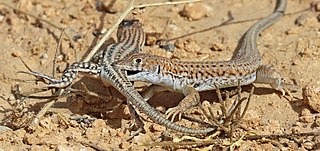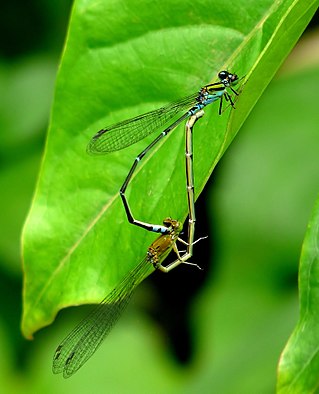
Acanthodactylus is a genus of lacertid lizards, commonly referred to as fringe-fingered lizards, fringe-toed lizards, and spiny-toed lizards.

Coral snakes are a large group of elapid snakes that can be divided into two distinct groups, the Old World coral snakes and New World coral snakes. There are 16 species of Old World coral snakes, in three genera, and over 65 recognized species of New World coral snakes, in two genera. Genetic studies have found that the most basal lineages have origins in Asia, suggesting that the group originated in the Old World. While new world species of both genera are venomous, their bites are seldom lethal; only two confirmed fatalities have been documented in the past 100 years from the genus Micrurus. Meanwhile, snakes of the genus Micruroides have never caused a medically significant bite.

Micrurus is a genus of venomous coral snakes of the family Elapidae.

Trachemys is a genus of turtles belonging to the family Emydidae. Members of this genus are native to the Americas, ranging from the Midwestern United States south to northern Argentina, but one subspecies, the red-eared slider, has been introduced worldwide. Species under this genus are commonly referred to as sliders.
Quadrigyridae is the only family within Gyracanthocephala, an order of parasitic worms of class Eoacanthocephala. This family contains two subfamilies, ten genera and about 92 species.

Chiloglanis is a genus of upside-down catfishes native to Africa. These species have modified lips and barbels that form a suckermouth. They also have a naked (scaleless) body. Sexual dimorphism has been reported in Chiloglanis. The adult males of many of these species have elongate anal and caudal fins. Also, males may have an enlarged humeral process.

Ceriagrion is a genus of damselfly in the family Coenagrionidae. Species of Ceriagrion are small to medium size, generally brightly coloured damselflies. They are found across the Old World, Africa, Asia and Australia.

Pseudagrion is the largest genus of damselfly in the family Coenagrionidae, with over 140 species. Its range includes most of Africa, much of Asia, and Australia. Africa holds most of the diversity with almost 100 species. It has occupied most of the freshwater habitats in its range, and dominates damselfly communities in habitats as different as desert pools, equatorial rainforests and montane streams.

The thorny-headed worm family Polymorphidae contains endoparasites which as adults feed mainly in fish and aquatic birds. When this taxon was erected by Meyer in 1931, a subfamily Polymorphinae was established in it. As the Polymorphidae as presently understood would then be monotypic, with no basal genera outside the Polymorphinae, the proposed subfamily is redundant for the time being and therefore most modern treatments simply omit it. Polymorphus minutus is an economically significant parasite in goose and duck farming.

Aphodius is a genus of beetles in the family Scarabaeidae. In most species both the adults and larvae are coprophagous although some species have herbivorous or saprophagous larvae. Aphodius species typically dominate dung beetle communities in north temperate ecosystems. Most species are functionally classified as endocoprids, also known as dwellers, because the larvae live and feed within the dung pat itself.

Profilicollis is a genus of acanthocephalan parasites of crustaceans. The status of the genus Profilicollis has been debated, and species placed in this genus were formerly included in the genus Polymorphus. However, research on the morphology of the group and their use of hosts has concluded that Profilicollis and Polymorphus should be regarded as distinct genera, and species previously described as Polymorphus altmani are now referred to as Profilicollis altmani in taxonomic and biological literature. Profilicollis parasites infect decapod crustaceans, usually shore crabs, as intermediate hosts, and use many species of shorebirds as definitive (final) hosts.

Oligacanthorhynchida is an order containing a single parasitic worm family, Oligacanthorhynchidae, that attach themselves to the intestinal wall of terrestrial vertebrates.
Centrorhynchidae is a family of parasitic worms. Three species of these thorny-headed worms in the genus Centrorhynchus were found to parasitize birds of prey and owls Slovakia. These hosts include Buteo buteo, Buteo rufinus, Falco tinnunculus, Asio otus, Strix aluco, Strix uralensis and Tyto alba.

Illiosentidae is a family of parasitic worms from the order Echinorhynchida.
Plagiorhynchidae is a family of parasitic Acanthocephalan worms.
Owilfordia is a genus of worms belonging to the family Plagiorhynchidae.
Sphaerechinorhynchus is a genus of worms belonging to the family Plagiorhynchidae.
Ascarops is a genus of nematodes belonging to the family Spirocercidae.
Skrjabinoclava is a genus of nematodes belonging to the family Acuariidae.
Acanthatrium is a genus of flatworms belonging to the family Lecithodendriidae.











